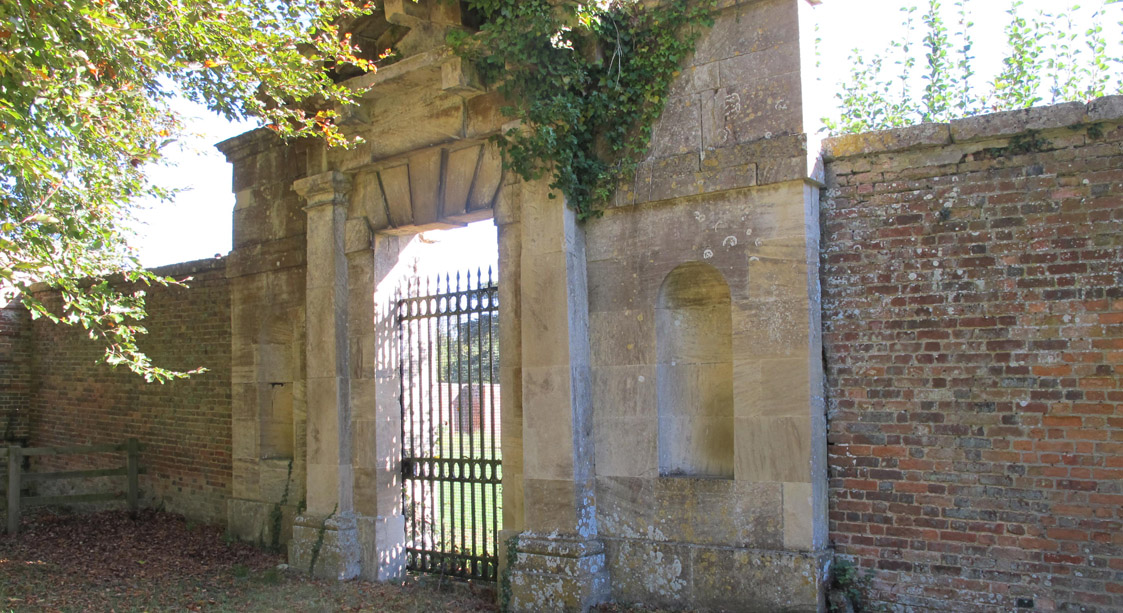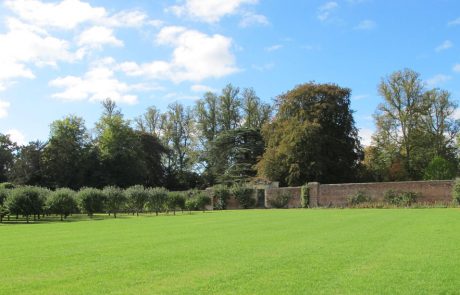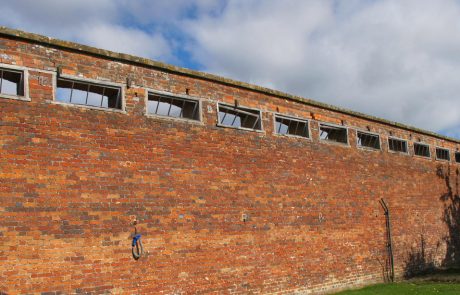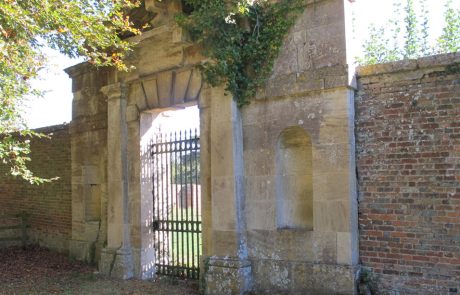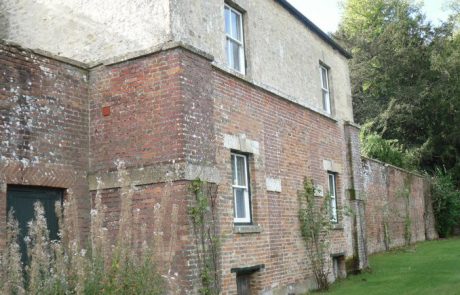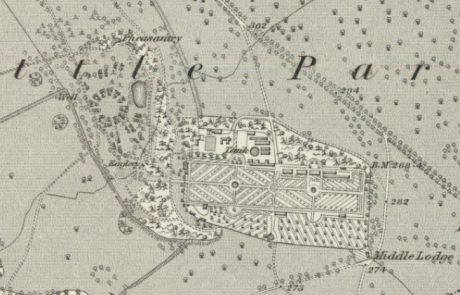Historical context
Blenheim Palace was designed by Sir John Vanbrugh assisted by Nicholas Hawksmoor in 1705 – 1722 for the 1st Duke and Duchess of Marlborough. Simultaneously, the formal gardens were created by Henry Wise, and in 1764 Lancelot Brown landscaped the park. The kitchen garden, designed by Vanbrugh, was constructed by the master bricklayers Thomas Churchill and Richard Stacey in c. 1710. Charles Bridgeman’s plan of 1709 shows it divided internally into two halves with each half sub-divided into four quadrants around a central circular pond. Opposite the ponds, projecting out from the north and south walls, are semi-circular bastions.
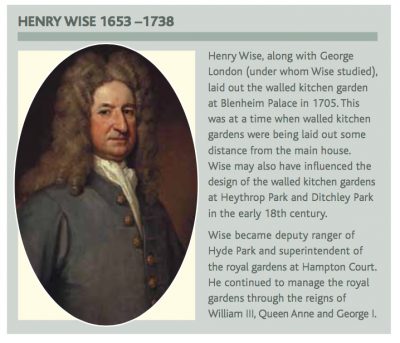 Walled Kitchen Garden
Walled Kitchen Garden
The rectangular walled kitchen garden lies over 600 metres south-east of the Palace where it occupies an area of 3.2 ha, measuring c. 80 x 320 metres with an east-west axis. The irregular slip garden to the south, serving as an orchard, is another 1.6 ha in area and a frame yard to the north was originally 0.3 ha.
The central gateways in the north and south walls have large piers over moulded stone plinths. A Palladian gateway was built in the west wall by William Chambers in 1772. On each side of the four bastions are keyed stone ashlar niches set inside the walls; the one to the north-west has a bellcote and bell above. The original melon house attached to the south-west walls was extended in the late 18th century to provide a gardener’s house.
The walls are c. 4.3 metres tall, built in Flemish bonded brick, buttressed and stone coped. The south wall of the slip is coursed limestone. Paths shown on the 1st edn OS map (1877) largely survive. The outer north walls between the bastions are now occupied by lean-to brick-built buildings that subsume three previous small bothies.
The 1st edn OS map shows nine glasshouses within or attached to the walls plus four others in the frame yard. By 1899, the 2nd edn OS map shows the area of the frame yard to have tripled and the number of glasshouses to have more than quadrupled. The early glasshouses have largely been demolished although traces survive, such as the 12 hinged window frames high in the south wall. Fruit trees lined the walls, indicated by the numerous training nails and nail holes, while other fruit, particularly grapes, peaches, melons and pineapples were grown in hothouses.
Current use
The west and central parts of the kitchen garden are mainly laid to lawn except to the south-west, which is now an orchard nursery,and a cultivated vegetable area towards the centre north. The slip garden to the south was always planted as an orchard and currently contains, amongst others, Blenheim Orange apples. Many glasshouses still contain fruit trees. The bothies/sheds on the outer north wall are now occupied by a collection of historic agricultural implements. The area to the east, about a third of the walled garden, is now called the ‘Pleasure Gardens’ and is accessible to the public. This is currently occupied by a hedge maze created in 1991, a model village, and a fountain at the site of the original dipping pond. The south slip continues around the east wall and this is a childrens’ playground.
Special features
Architectural features: walls, gateways, bastions, niches, and bell on north wall. Parts of the original walls were built as double layered ‘hot walls’ heated via flues, visible in part on the outer south wall where some brickwork is missing. Many fruit trees have lead labels and some have leather or fabric wall ties.
Designation status
Blenheim Park is included in the Historic England, Grade I, Register of Historic Parks and Gardens, and the walled kitchen garden lies within this. The kitchen garden walls and attached house are listed Grade II by Historic England as being of special architectural and historic interest.
Degree of completeness
Good. Architectural features are substantially complete. Some restoration of walls where necessary. Glasshouses are demolished, restored or replaced. The west pond is filled in.
Ownership and access
Privately owned. The formal palace gardens and the eastern third of the walled kitchen gardens (the ‘Pleasure Gardens’) are open regularly to the public (www.blenheimpalace.com/).
Sources of information
Victoria County History – Oxfordshire
Bapasola, J, 2009, The Finest View in England: The Landscape and Gardens at Blenheim Palace.
Unpublished site survey undertaken by volunteers with Oxfordshire Gardens Trust, October 2013
Map reproduced by permission the National Library of Scotland – Maps
Portrait and text of Henry Wise from The Walled Kitchen Gardens of Oxfordshire p. 6 The Oxfordshire Gardens Trust, 2014
Name of district
West Oxfordshire
Grid reference
SP44769 15630

